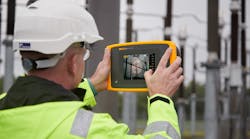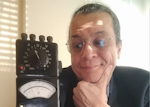Air Liquide is a multinational company supplying industrial gases and services to the health and industrial sectors. In a move to cut costs, reduce waste, and boost the efficiency of pipelines in Italy, it implemented advanced ultrasonic measurement devices from Fluke. The ii910 Precision Acoustic Imager was designed to be easier, faster, and safer to use in the field to measure with high sensitivity of gas, corona, and partial discharge. The easy-to-use point-and-shoot device can also detect compressed air, gas, and vacuum leaks.
Air Liquide has a strong sustainability agenda, and wanted to increase energy efficiency and reduce its carbon footprint by tackling air and nitrogen leaks at its dual-mixed-refrigerant refinery in Syracuse, Sicily. The company performs measurements every two years on all pipelines around the refinery, a total of 7 km of compressed air line and 9.44 km for nitrogen, as well as an additional 5 km of interconnecting pipelines. Leak detection and repair checks must also be made every 12 months by Italy’s environmental regulator ISPRA.
Integrating 64 digital MEMS microphones, the ii910 maintains a frequency range from 2 to 100 kHz, and can locate leaks quickly, detecting a 0.005 cubic feet per minute (CFM) leak at 100 PSI from up to 32.8 feet away (a 2.5-cm3/s leak at 7 bar from up to 10 m). The acoustic imager also has a 1280 × 800 LCD display as well as a battery life of over six hours in the field.
The checks were performed by Belgium-based Intero. The ii910 acoustic imager revealed several leaks on the refinery’s air pipeline and multiple leaks on the nitrogen system, enabling Air Liquide engineers to take immediate action.
According to Sebastiano Carpinteri, Process Engineer at Air Liquide Priolo, “Because our Syracuse refinery operates on a 24-hour basis, avoiding downtime is essential. That means tests for leaks must be carried out as easily as possible and results analyzed in the shortest time. Using Fluke’s ii910 Precision Acoustic Imager, measurements over the entire pipeline can now be assessed from a static position by just one person.”

